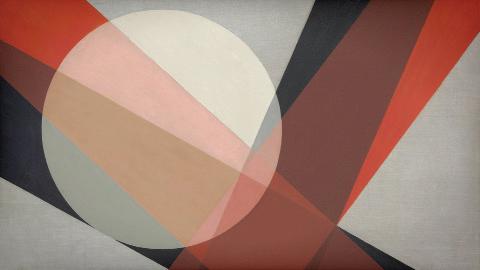
3 minute read
100 Years of Bauhaus
from TN2 November 19/20
by Tn2 Magazine
your guide to 100 years of 100 years of
bauhaus
Advertisement

Words By: Libby Phillips
Th e Bauhaus school was founded by Walter Gropius in 1919. First set up in Weimar, Germany, the school was known as the Staatliches Bauhaus. Between 1919-1933, the offi cial end of the school, it found its home in Weimar, Dessau, and Berlin. In 1933, the school was pressured by the Nazis to replace its staff with Nazi sympathizers. Rather than cooperate with the Nazis, the school voted to close. Despite its brief 14-year existence, the Bauhaus school lived on as a movement which is seen today as the foundation for modern design, aesthetic, and art theory.


Th e Bauhaus school had over 1,250 students and its teachers were iconic artists of the 20th century. Some of the more recognizable names to pass through the school include Paul Klee, László Moholy-Nagy, Joseph and Anni Albers, and Wassily Kadinsky, among others. Klee joined the school as a painting instructor in 1920 and, along with Joseph Albers, contributed to the formative fundamental courses students took at the start of their education. Klee was a painting instructor while Albers focused on glass. Anni Albers, though, did weaving and is considered, perhaps, the most prolifi c weaver of the twentieth century. Moholy-Nagy was initially brought in for his use of metal, but did much of his work in photography. He was particularly interested in experimentation in the darkroom and how light could be used to distort photography. Finally, Kadinsky, who was also a painter. Kadinsky is likely one of the most remembered faces of Bauhaus as his work is oft en recognized as the epitome of the school’s artistic achievements. 8
Th e Bauhaus school was heavily infl uenced by the Arts and Craft s and Art Nouveau movements. Its inception was imagined as a way to combine industrial design with creativity and fi ne art. Strong geometric components are oft en associated with Bauhaus, though it is notable as a movement which went beyond painting and sculpture: architecture, weaving, pottery, utensils, furniture, photography, collage, poster-making, graphics, and more were all part of the school. In fact, cabinet making was one of the most important classes students took.

Bauhaus was concerned with the cold nature of modern manufacturing and sought to inspire life in industry. While mass production is oft en seen as the death of creative expression, Bauhaus saw it as a way to bring art to the public and everyday life. Additionally, the diverse range of artistic

Each artist was infl uenced by a variety of factors, though Bauhaus was staunchly disinterested in history and wanted, instead, to “rethink the world.” Th us, new ideas of utopianism and psychology caused artists to experiment in theory in much greater depth than before. Kadinsky was infl uenced by the newly defi ned Gestalt principles of design— similarity, continuation, closure, proximity, fi gure/ground, and symmetry & order. Joseph Albers wrote and worked extensively to explore the question, how do we perceive colours separate from their physical realities?



Th e Bauhaus method of teaching emphasized abstract theory and practical craft smanship. Before offi cially entering the school, students had to complete courses on the fundamentals of art under two teachers, one for theory and one for craft . Today, nearly every major art curriculum models itself on the Bauhaus School, especially when beginning students’ education on the fundamentals of art.
To see Bauhaus today, you might visit the Whitney Museum, designed by Bauhaus student Marcel Breuer. Bauhaus is even here in Dublin: Th e National Gallery currently has an exhibition up until December 1st, and admission is free! It features 52 pieces from 1922-24 of the Bauhaus movement by many of the names mentioned above. Otherwise, you could look around your own home. Mid-century modern design and even elements of minimalism have been inspired by Bauhaus, so your own furniture could have been infl uenced by the principles Gropius developed 100 years ago.











